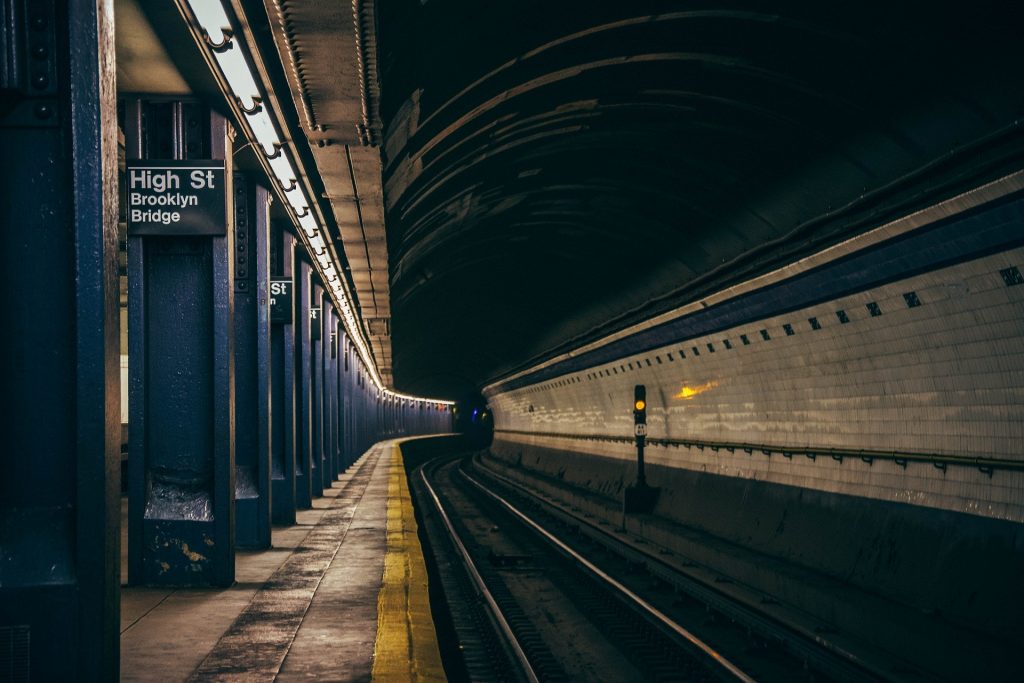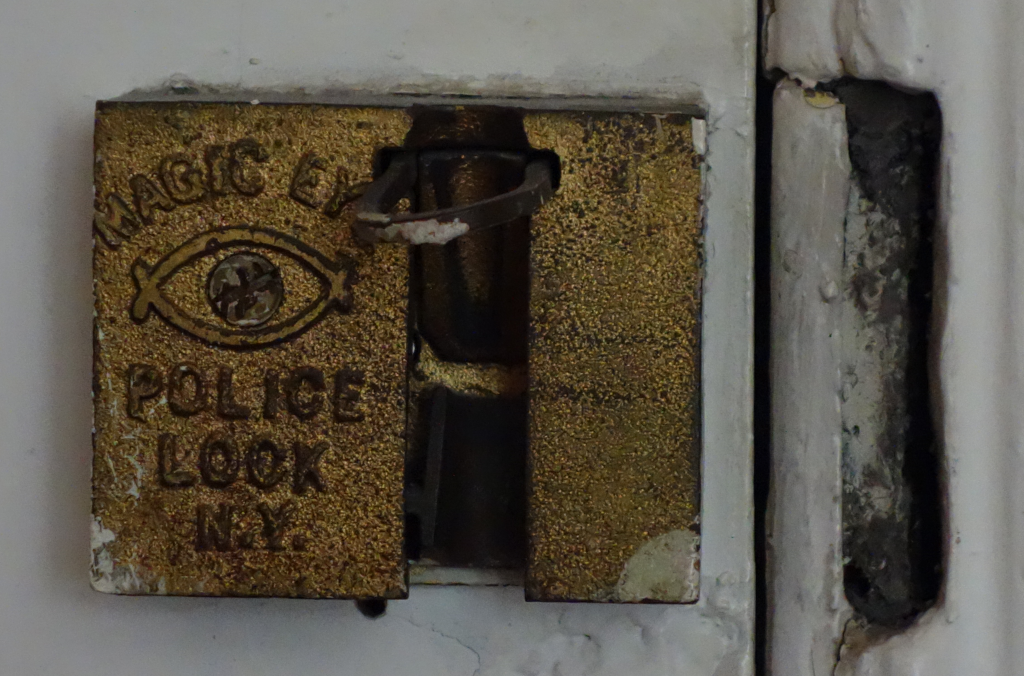New York Returns
New York, 11 May 2020
New York is back. I don’t mean flattening the curve or reopening, baseball or Broadway. But New York as a city defined by a flintily unforgiving grandeur: a place not merely to be toured or consumed, but respected and even feared.

During March and April, as the coronavirus played out its miserable masque, I received repeated well-intentioned messages from friends in other cities about the situation in New York being “scary.” Only one appeared to be dispatched with frank schadenfreude: time for the fat cats to feel it. Part of what scared me about these messages was itself the childish term scary, as if the virus had made infants of us all. The more adult frightening would have been reassuring, but no-one used it. Add to this the unnerving sense that people thousands of miles away seemed to know far more about the latest local horror than I did. The very words New York, which have fallen so lightly, so carelessly from our lips in recent years, were now leaden and fraught.
New York is a divided city and the pandemic’s burdens have fallen on it unequally. Manhattan is not Queens. Yet the front door of our Upper West Side apartment suddenly looked different anyway. The door has a police lock on it made by the Magic Eye Company. It’s a vestige of the 1970s. In the wooden floorboards in front of the door – if you lift the rug that tactfully conceals it – you can see the small but brutally impaled area where some long-ago resident inserted a wooden pole to brace the door at 45 degrees, barricading themselves against intruders. We often marvelled at this historical curiosity. Imagine living like that in Manhattan. Would anything ever make the clock turn back? Both 9/11 and the financial crash of 2008 failed to. But what would happen now outside that door?

In truth, New York City has always been scary. “I always seem to suffer some loss of faith in entering cities,” Ralph Waldo Emerson wrote in the mid-nineteenth century, contrasting urban “contrivance” and corruption with the “unbroken horizon” of the countryside. “Don’t you see,” Woody Allen asked in Annie Hall (1977), “the rest of the country looks upon New York like we’re left-wing, communist, Jewish, homosexual pornographers? I think of us that way sometimes and I live here.” Recently, as everybody knows, rivers of money have drowned out the more creative forms of angst, making the city much safer, much blander and far less exceptional. For some time, hedge fund era fortunes have succeeded in obscuring the fact that New York provides the world not only with its classic image of urban modernity, but also the essential reflection of its ambivalence about that modernity. The place we all want to live, if only we could afford it, is also a place of damnation, where the subway – currently a kind of no-go zone – plays the part of hell. This hysterical scenario is immortalized in Escape from New York, written by John Carpenter in 1976 and released in 1981: leave or die.
More profound, however, than the dread of the unknown during the last two months has been the darkly magical sense of time bending back to the known, of history returning and coming true – like a fable coming to life. The economic march of New York with all its glittering injustices has halted, only for the spectre of mass poverty to flicker into view. The cultural attraction of great cities to many of my generation (b. 1972) has depended on cheating history, to be honest: catching them oh so fortuitously between decay and unaffordability. I myself arrived in 1997. But since the mayorships of Giuliani and Bloomberg, Manhattan has become prohibitive and suburban: a soft-boiled shuffle of condos and SUVs, flip-flops and bike paths, where tourists are guided by GPS. Only the lingering decrepitude of the subway stands out as a monument to blight right in the heart of Manhattan. The tourists gazed at the crumbling ceilings even at the best of times, snapping photos of the rats scuttling on the tracks as though in a ’70s Museum. These little cameos of rot conjure up movies like The Taking of Pelham 123 (1974) and countless other disaster films, where the very human and infrastructural complexities that comprise New York are the disaster. But that was all in the past.
What comes now is, as they say, uncertain – though still familiar. There was a subtly anaesthetising shock when the city’s wealthier denizens quickly decamped to their country homes in March. Ah. So this is also what it means to be a New Yorker. Here was the logic of the summer season playing itself out, albeit at a distinctly odd time of year. One shelters as one summers, slipping out of town. Easy New York was gone and best evacuated. Density was now tragedy. Everything was hard, every place was far. Brooklyn remote; Queens a nightmare. The logic of films that took white flight for granted and urban disaster as destiny, like The Stepford Wives (1975), came alive again. For the first time in decades, you could actually feel that logic like a historical force fighting money and convenience for people’s loyalty to the city. In the long run, however, escapes from New York tend to be followed by returns, more than we tend to imagine. Summer ends; people come back to do business after Labour Day. The tourists will take pictures of rats in the subway again one day.
Yet the thought persists: could the giant social and economic engine that is New York fall back into the past? Just two months on, with millions out of work and no timetable for recovery, the shock of the New York shutdown is already a memory. The incredibility of this event is itself history. With talk of reopening, idealists call for restarting life differently, with less of the wrong kinds of modernity: the commuting and the crowding, the polluting and abusing. Mixed in with the miseries of lockdown and the desire for normality is the relief many have felt in not going to work. A yearning for some kind of transformation is unmistakable. This hope not to return to things just as they were is the most radical aspect of the pandemic. But what comes of it, if anything, no-one knows.
New York is of course unimaginable without buying and selling. This may be why, instead of transformation, it is has fallen into a peculiarly numb suspended animation. The people in the parks and riding the bike-paths aren’t really going anywhere and they know it. Everyday feels like a Sunday afternoon. The city looks like a backlot, an unconvincing imitation of life, where the doors on the buildings rarely open. When he arrived in New York in 1946, Albert Camus thought the locals looked like they’d just stepped out of a B-movie. But now there’s no show. Camus was not the city’s greatest admirer: “hideuse ville inhumaine” was his first impression. New Yorkers, never the happiest of people, wait impatiently behind their masks, determined to make it to that great shining tomorrow, whatever it brings. There is little else to do.
For all this, the city again commands reverence. One has to admire the difficulty of life in New York and respect its potential for disaster. It is sublime in the eighteenth-century sense of the term, at once magnificent and menacing. Its greatness is inextricable from its capacity for catastrophe. It involves life and death on an impressive scale, burdened by the role it plays in the world’s image of itself, rising into the sky or sinking beneath the waves with superior drama. Either way, it’s something to behold, and a place to respect in its distress – a condition it knows well, when it chooses to remember. Hardships past offer precious resources, not just warnings. The city’s art and culture of the 1970s and ’80s, including certain films and television shows, evoke an admirably defiant way of life, which might be called the state of festive emergency. New Yorkers living in difficult times in a difficult city, addled and alarmed, cutting and inventive, rude and humane. The state of festive emergency may now be set to return.

